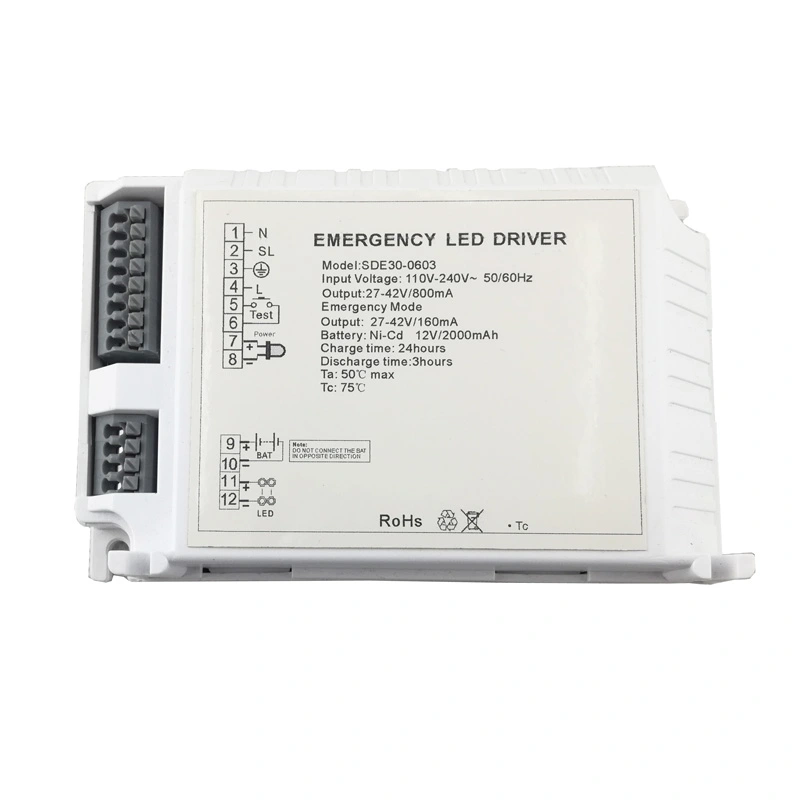In Zambia, rice processing plants frequently face power outages that significantly disrupt operations. These power interruptions not only delay the processing of rice but also pose a serious risk to product quality.
For example, during a power cut at a rice mill in Lusaka, production halted for hours, causing a backlog of orders and spoiled batches. Such events highlight the vulnerability of processing plants to unstable electricity supply.
One of the major factors exacerbating these challenges is the lack of proper emergency lighting systems. Without reliable backup lighting, workers are unable to continue operations safely during power failures, leading to inefficient workflows and increased risks of accidents.
In this context, investing in emergency lighting solutions, such as emergency drivers and LED emergency ballasts, can significantly enhance operational continuity.
These systems ensure that plants remain operational, safeguard the workforce, and maintain production schedules, contributing to greater efficiency and safety in the long run.
Role of Emergency Lighting in Ensuring Operational Continuity
Emergency lighting plays a crucial role in maintaining smooth operations during power failures, especially in environments like rice processing plants where continuous production is vital.
When the primary power supply is disrupted, emergency lighting systems, such as emergency drivers and LED emergency ballasts, ensure that key areas remain lit, preventing operational halts and maintaining visibility for workers.
This helps in avoiding accidents and delays.
Dimmable Emergency Module:
Dimmable emergency modules adjust light intensity during power outages, providing energy-efficient lighting tailored to the specific needs of different areas.
In rice processing plants, this allows brighter lighting in critical areas and dimmer lighting where less is needed, optimizing energy use.
Full Emergency Power:
Full emergency power systems ensure uninterrupted lighting in essential areas during power cuts.
Integrating emergency ballasts and LED emergency ballasts, these systems maintain continuous lighting, preventing production delays and maintaining operational efficiency.
Fluorescent Emergency Power:
Fluorescent emergency power systems provide backup lighting using fluorescent lamps and emergency ballasts.
These systems are reliable and cost-effective, ensuring that rice processing plants remain illuminated during power outages without interrupting production.
LED Integrated Emergency Power:
LED integrated emergency power systems combine energy-efficient LED technology with emergency lighting solutions.
The LED emergency lights keep lights on during power failures, reducing energy consumption while ensuring continuous, environmentally friendly illumination in rice processing plants.

Cost vs. Benefit: Is Emergency Lighting a Worthwhile Investment for Zambian Rice Processing Plants?
Investing in emergency lighting solutions for Zambian rice processing plants is highly cost-effective in the long run.
While traditional lighting systems can be cheaper initially, they don’t offer the same benefits as advanced emergency lighting systems.
LED emergency ballasts and dimmable emergency modules, for example, are more energy-efficient and have a longer lifespan than traditional fluorescent systems.
These features lead to reduced energy consumption and fewer replacements, saving both operational costs and time.
In rice processing plants, where power outages can halt production, emergency ballast systems ensure that lighting remains operational, reducing downtime.
This means more consistent production and fewer financial losses from spoiled batches or delayed shipments.
Additionally, because these systems last longer and consume less energy, the overall cost of ownership is far lower than with traditional lighting systems.
Over time, this investment proves to be not only more reliable but also more economical for Zambian rice mills.
How Emergency Lighting Boosted Rice Processing Efficiency?
The introduction of emergency lighting in rice processing plants has proven to significantly boost operational efficiency. For instance, a rice mill in Zambia experienced a drastic improvement after installing emergency lighting systems.
Prior to the installation, frequent power cuts led to extended downtime, disrupting processing schedules and leading to financial losses due to spoilage and delayed shipments.
With the new emergency lighting system in place, production continued seamlessly during power outages, reducing downtime by up to 40%.
In addition to minimizing downtime, emergency lighting solutions also enhanced safety for workers, preventing accidents in low-visibility conditions.
This improvement in safety contributed to fewer workplace injuries and better employee morale.
Furthermore, the enhanced lighting allowed for more efficient operation of machinery, resulting in a higher production output.
Overall, the implementation of LED emergency ballasts and other emergency lighting components helped optimize energy use while keeping production on track, thus boosting the rice mill’s overall profitability.
Long-Term Benefits For Supporting Zambia’s Vision for Agricultural Growth
Emergency lighting systems are crucial in supporting Zambia’s broader agricultural and economic vision.
By providing consistent lighting during power outages, these systems play a pivotal role in reducing production downtime, which is a key factor for Zambia’s rice processing sector.
This directly contributes to Zambia’s long-term goals of boosting agricultural productivity and industrialization.
Additionally, sustainable lighting solutions, such as LED emergency ballasts and dimmable emergency modules, help conserve energy and reduce operational costs.
These savings can be reinvested in further industrial improvements, creating job opportunities in both the agricultural and manufacturing sectors.
Moreover, reliable energy infrastructure fosters a stable working environment for workers, improving food processing efficiency and food security across the nation.
As Zambia continues to grow its agricultural industry, integrating emergency lighting systems into rice mills and other agricultural infrastructure supports the country’s efforts to enhance its competitiveness in the global market while promoting economic growth.
Not sure what you required for your lightining project ?
Get in touch with us for FREE consultation.